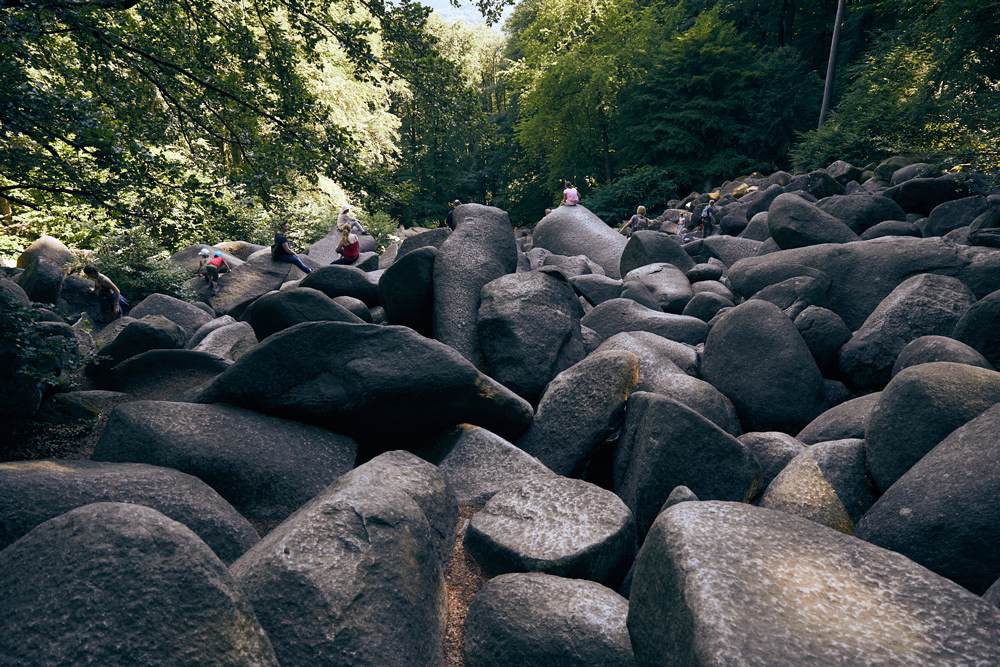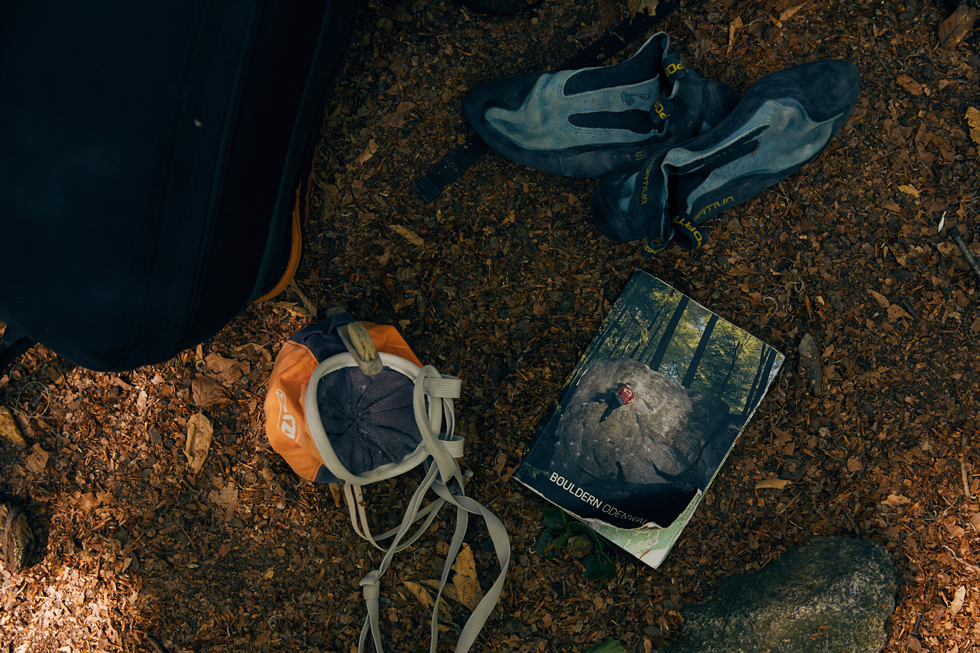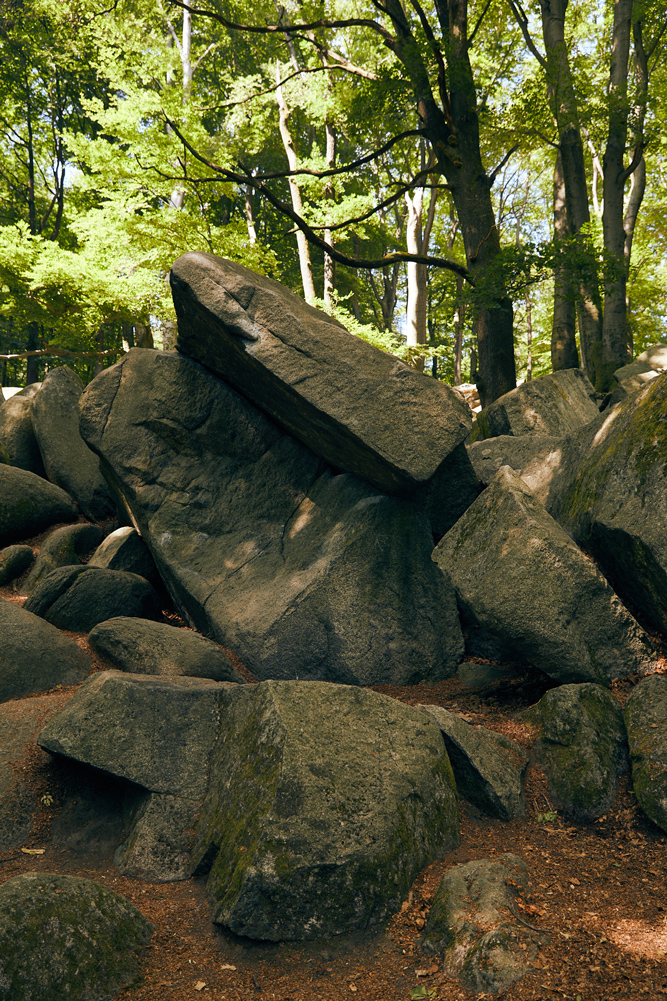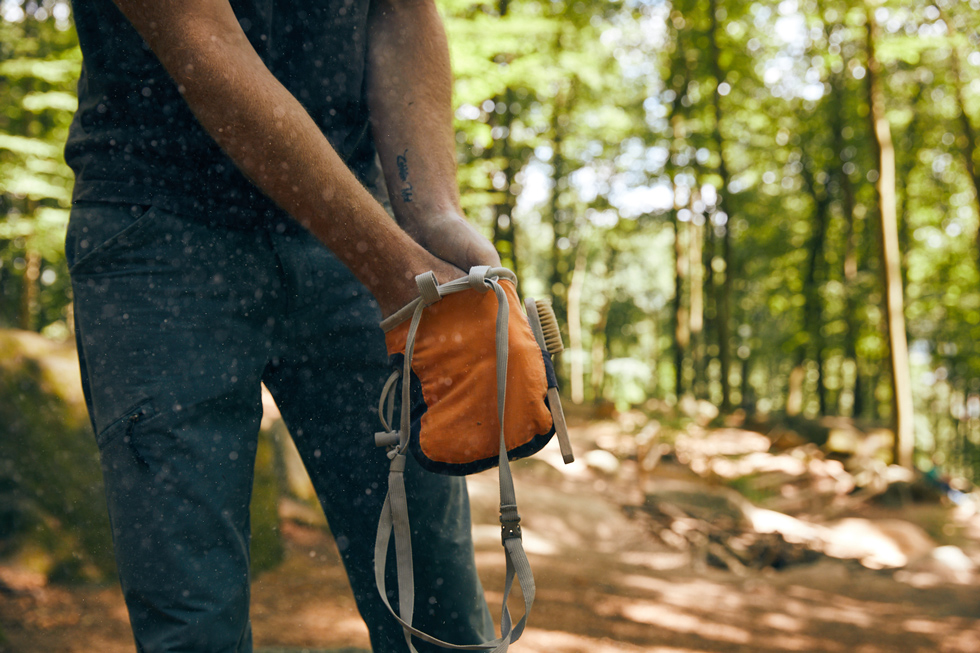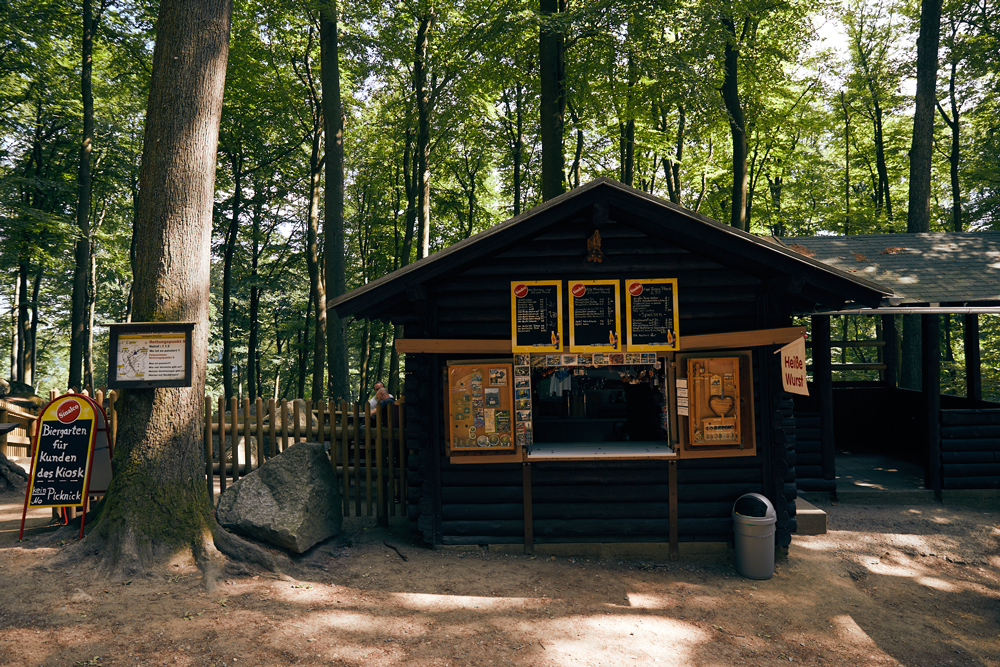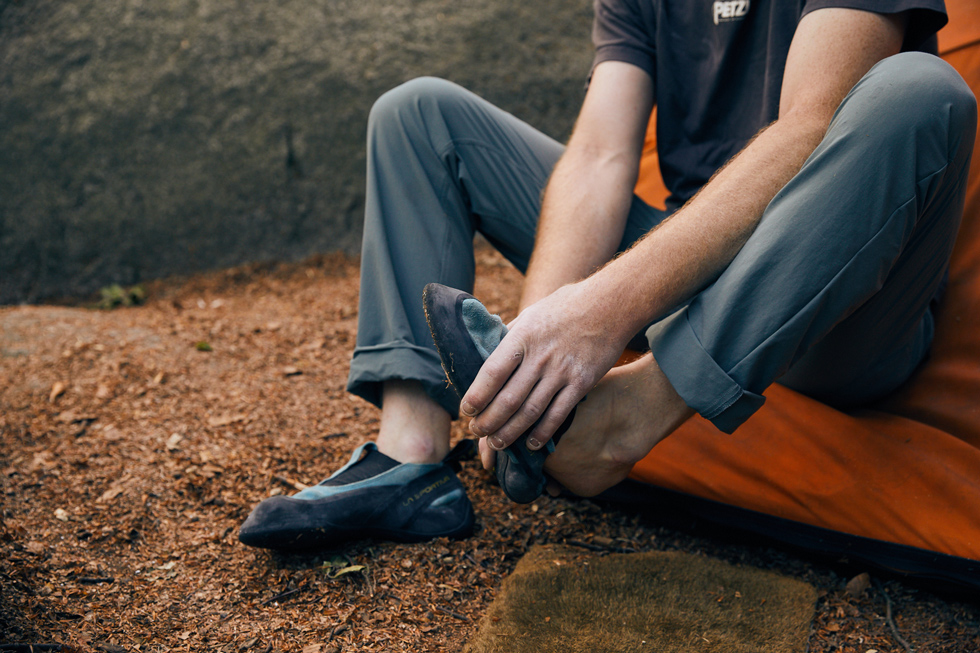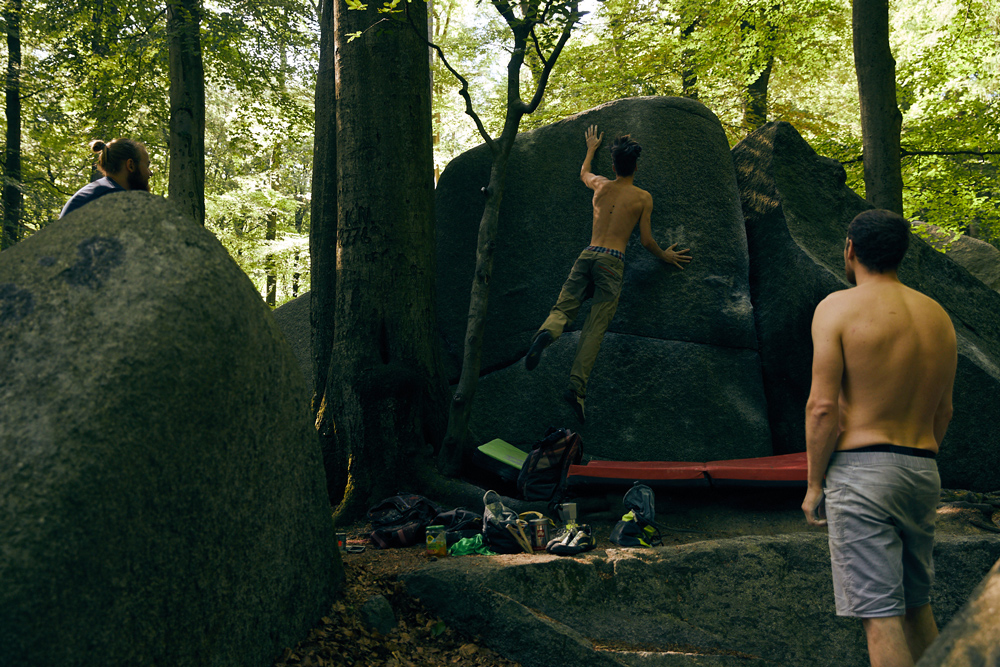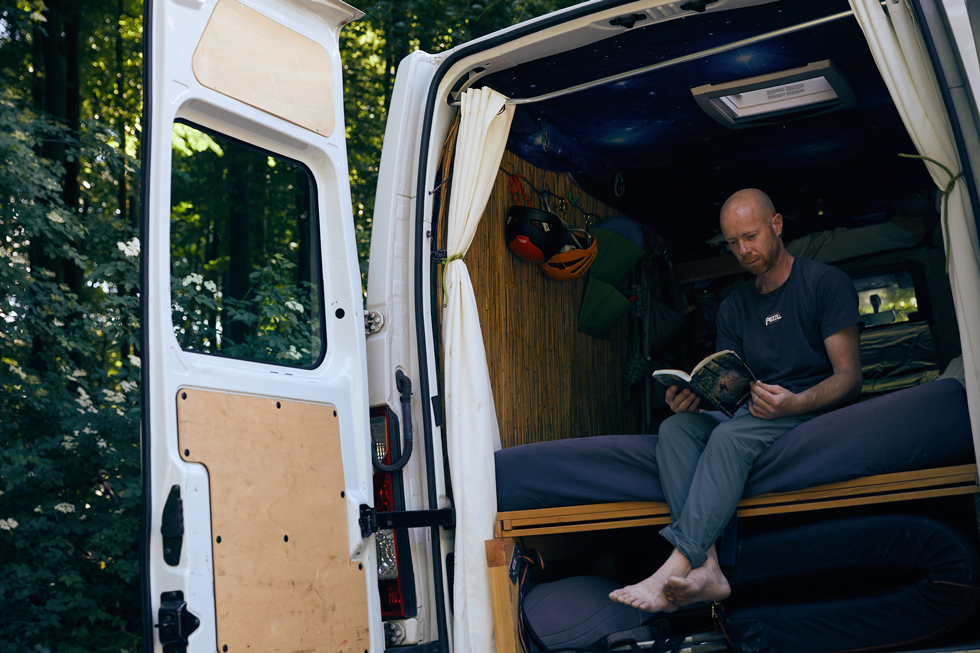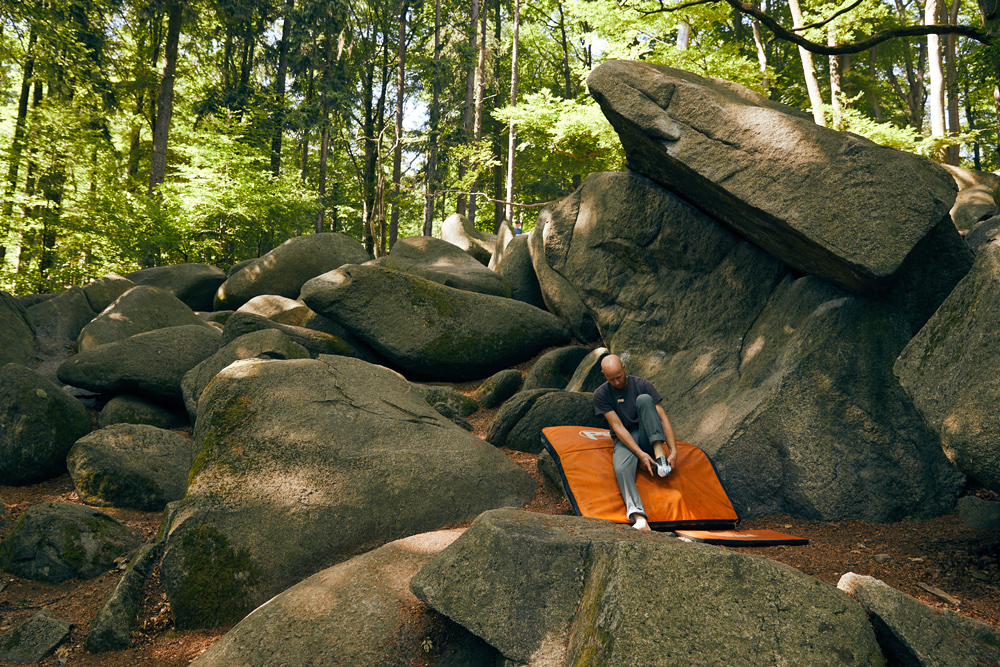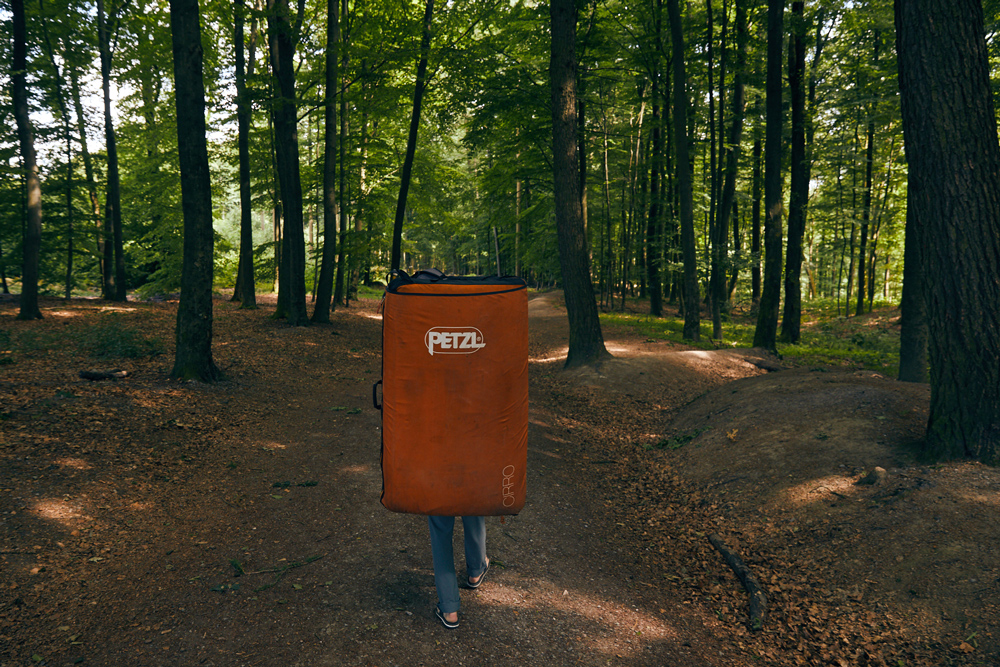Bouldering is extreme rock climbing—just above the ground. Odenwald with its bizarre rock formations is a real challenge for any climber and a great experience for nature lovers. The new edition of a guide presents the most rewarding destinations.
Those two giants have really made a mess in Odenwald. They used to live here long time ago—one of them on the Felsberg mountain, the other on the Hohenstein boulder. Legend has it that they threw huge rocks at each other in an argument, leaving behind chaos in the shape of massive granite blocks: the Felsenmeer (sea of rocks) close to the village Reichenbach in the municipality of Lautertal.
Sascha Jung knows the old legend through which people in Merians days in the 17thcentury apparently tried to understand the gigantic pile of rocks in the middle of the forest. Today, like most of the visitors to the Felsenmeer near Lautertal-Reichenbach, he knows that it arose from the collision of two continents causing rock deep in the ground to melt and ascend as magma to the surface where it congealed as ‘melaquartz-diorite’ some 340 million years ago. Through erosion and over the course of millions of years again, the dark grey boulders of the rock sea where formed—the stuff that today’s boulderers’ dreams are made of.
In pursuit of happiness Sascha has roamed the Odenwald for many years. And he has found it—in the shape of cliffs and rocks that provide the opportunity for extreme climbing right on his doorstep and far away from the Alps. Climbers love the characteristics of the Odenwald cliff formations: rough, easy to grip and so tough. Sascha presents several hundred rocks in the most recent edition of his guide “Bouldern Odenwald” (bouldering in the Odenwald) and recommends the most rewarding destinations here. Here, you are spoilt for choice: Large, ‘classic’ granite areas are located in the northern part and the Riesenstein (giant stone) formation with its up to 10-metre red sandstone walls lures in the southern, Baden part of the Odenwald, just above the Old Town of Heidelberg. This is where you can go for a climb tracking the famous Heidelberg mountaineer Reinhard Karl, who was the first German to stand on Everest and who redefined alpinism with his photos, books and tours. The most challenging ascent at the Riesenstein is currently the extreme tour “Mensch und Maschine” (man and machine) at an 8b degree of difficulty which corresponds to the ridiculous 11thgrade in alpine mountain-climbing and can only be conquered by few, extraordinarily fit and experienced people.
Most boulderers climb at moderate difficulty degrees that nonetheless demand intense practice. A boulder is regarded as conquered when all parts of the body are away from the ground and the climber stands on it. The ascents are short but technically usually so demanding that they would be almost ‘unclimbable’ on a big wall in the Alps.
